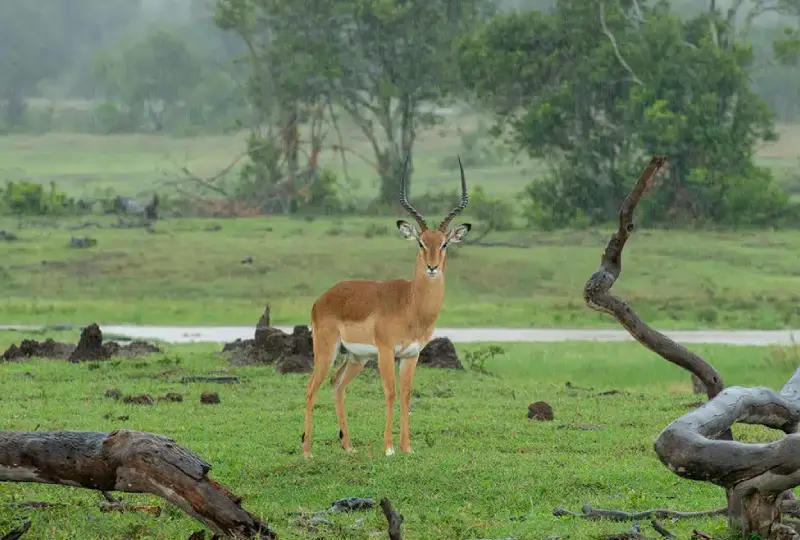Katavi National Park Overview
Katavi National Park, located in western Tanzania, is one of the country’s most remote and untouched wilderness areas. Covering approximately 4,471 square kilometers, it is the third-largest national park in Tanzania, yet it sees far fewer visitors than the more famous northern parks, making it a paradise for travelers seeking isolation and unspoiled wildlife encounters. Katavi is dominated by vast floodplains, seasonally inundated swamps, and riverine forests, which attract enormous concentrations of wildlife during the dry season. Its remoteness, dramatic landscapes, and incredible biodiversity provide a raw and authentic safari experience that is unmatched in Tanzania.
The park is renowned for its spectacular wildlife spectacles, particularly the large herds of buffalo, hippos, and elephants that gather in the floodplains. Lions, leopards, cheetahs, and hyenas stalk the abundant prey, while crocodiles dominate the Katuma River and surrounding waterholes. Birdlife is equally impressive, with more than 400 species recorded, including pelicans, herons, storks, and raptors. Katavi’s combination of wetlands, open plains, and gallery forests creates a dynamic ecosystem that supports both predator and prey in dramatic displays of natural behavior.
Katavi National Park is ideal for travelers seeking a true off-the-beaten-path safari. Its low visitor density ensures intimate wildlife encounters without crowds, allowing guests to feel fully immersed in nature. Game drives in this remote park are often accompanied by rangers who provide deep insights into the region’s ecosystems, while seasonal variations bring constant changes in scenery and wildlife activity. For those willing to journey into Tanzania’s wilderness, Katavi offers one of the most rewarding and authentic safari experiences in Africa.
Where is Katavi National Park located?
Katavi National Park is located in western Tanzania, approximately 550 kilometers southwest of Dodoma and 730 kilometers from Dar es Salaam. It lies in a remote region, with access mainly from the town of Mpanda or via charter flights from Dar es Salaam, Mbeya, or other regional hubs. Its isolation contributes to the park’s exclusivity and unspoiled wilderness atmosphere.
What makes Katavi National Park unique?
Katavi is unique for its remoteness and pristine wilderness. Unlike the northern safari parks, Katavi sees very few visitors, which allows for close and uninterrupted wildlife encounters. The park’s vast floodplains and swamps support large congregations of buffalo, elephants, hippos, and crocodiles, especially during the dry season. Its combination of wetland ecosystems, riverine forests, and open savannah provides a habitat for both iconic and rare species, making it one of Tanzania’s most biologically diverse and rewarding parks for serious wildlife enthusiasts.
What animals can be seen in Katavi National Park?
Katavi is home to an extraordinary variety of wildlife. Visitors can encounter large herds of elephants, buffalo, and zebra on the floodplains, while predators such as lions, leopards, cheetahs, and hyenas patrol the grasslands. Hippos and crocodiles dominate the Katuma River, creating dramatic scenes along the waterways. Birdlife is abundant, with over 400 species including African fish eagles, pelicans, storks, and migratory waterbirds. The park also shelters lesser-known species like hartebeests, sable antelopes, and oribi, providing a rich safari experience beyond the usual “big five.”
When is the best time to visit Katavi National Park
The best time to visit Katavi is during the dry season, from June to October. During this period, the floodplains shrink and wildlife congregates near permanent water sources, making animal sightings spectacular. The wet season, from November to May, transforms the park into lush greenery, but some areas may become inaccessible due to flooding. Travelers seeking dramatic wildlife interactions and easier game viewing should plan their visits during the dry months.
How can travelers access Katavi National Park?
Access to Katavi is primarily by air or road. Charter flights from Dar es Salaam, Mbeya, or other regional centers land at Mpanda airstrip, the main gateway to the park. For overland travelers, a long 4×4 drive from Mbeya or Iringa is possible but challenging, particularly during the rainy season. Most safari operators combine air transfers with guided game drives for the most efficient and comfortable experience.
What safari activities are offered in Katavi National Park?
Game drives are the primary activity in Katavi, providing opportunities to witness large herds of elephants, buffalo, and other wildlife up close. Birdwatching is also exceptional, particularly around the Katuma River and seasonal wetlands. Guided walking safaris are available in select areas for travelers seeking immersive experiences, though they require experienced guides due to the presence of large predators. Photography safaris are particularly rewarding, as the park’s open plains and floodplains create striking natural backdrops.
Where can travelers stay in Katavi National Park?
Accommodation options are limited but include luxury lodges, tented camps, and safari camps near the park’s entrances or along the Katuma River. Lodges such as Katavi Wildlife Camp and Camp Mpanda provide comfort while offering easy access to game drive routes. Due to the park’s remoteness, visitors are advised to book well in advance and prepare for limited facilities compared to northern safari parks.
How does Katavi compare to other national parks in Tanzania?
Katavi is significantly more remote and less crowded than northern circuit parks like Serengeti or Tarangire. Unlike Ruaha or Nyerere, which offer a variety of safari activities, Katavi’s appeal lies in its untouched wilderness and the sheer size of its wildlife congregations. Visitors looking for solitude, authentic safari experiences, and dramatic wildlife spectacles will find Katavi unparalleled. Its remoteness ensures encounters with nature in a raw and unspoiled setting that few other parks in Tanzania can match.
Is Katavi National Park safe for visitors?
Yes, Katavi is safe when visitors follow standard safari precautions. Guided game drives with professional rangers ensure safety around large predators and elephants. Guests are advised to respect wildlife, remain in vehicles during game drives, and follow park rules. These precautions guarantee a secure, rewarding, and immersive safari experience in one of Tanzania’s most remote wilderness areas.

